The dCS Bartók DAC/Headphone Amp, bringing the rarified air of true “State-of-the-Art” to personal audio.
Digital audio started in the early 1980s when Sony introduced the world’s first CD players. The marketing campaigns describe the sound of CD recordings as being perfect and the end-all for music delivery with its compact size. Sony marketed it as perfect sound forever.
When the first player I bought back in the early ’80s arrived and I listened I was wondering what the fuss was about with CDs. The early digital recordings from remasted tapes were anything but magical. They had a nasty harsh sound in the high frequency and digital noise later described as jitter caused by the clock and issues between the transport and digital to analog converter.
Engineers started working on designing players and separate digital converters to tackle issues and deal with jitter and make the format musical and live up to the full potential of what was truly possible with digital recordings.
Companies started creating new products to address the issues that CD players and other converters had with jitter and a new industry was created with companies and engineers working to solve the multitude of issues inherent in digital devices.
New companies like Audio Alchemy (who began developing products introduced by Mark Shifter and Peter Mandrick) was successful in bringing affordable DAC’s and jitter reduction devices to the market rose up to address these issues.
The worldwide revolution of the digital age of audio had begun and in Cambridge England in 1987 a bright group of engineers founded dCS. The company was created to work on digital converter products that would-be revolutionary and unequaled, to this day, by providing ground-shaking performance from the format through products that would make jitter almost nonexistent and get the best analog conversion from digital recordings to achieve that “perfect sound forever” everyone had been hearing about and had been promised with the new format.
dCS’ Ring DAC technology was developed as a way to circumvent the limitations of existing DAC chips using a completely proprietary system that provided linearity at low levels that were simply not achievable via conventional means.
To implement this they created the dCS Digital Processing Platform, a fully programmable hardware solution built around state-of-the-art Field Programmable Gate Arrays and Digital Signal Processing ICs that allows dCS to build multiple devices through the simple expedient of software and allows for easy upgrades via software updates.
This also lets dCS handle filtering and signal processing in software, meaning that not only is there a pathway for continuous improvement that can easily be passed to the consumer, but that as new technologies are implemented they can be incorporated into existing units by the user through software updates.
Since there is more to clocking than controlling jitter, dCS takes great care to ensure that their clocking is as accurate as possible, from the precision, low phase noise, crystal oscillators that generate the clocks at the heart of every dCS unit, to the low noise, low skew clock distribution systems that get the clock to the point of use exactly as it was generated.
All internal processing, from power supply synchronization to the high-speed signal processing and modulation, is synchronous with the main audio clock for absolute precision and consistency.
Over 30 years of development and refinement have culminated in the dCS Vivaldi Digital Playback System. While not inexpensive it has received worldwide acclaim as the world’s best digital system with sound quality rarely found in any other audio product. The new Ring DAC technology is still the best in digital conversion and unequalled in performance since it was first designed.
Obviously, the cost of the Vivaldi was for many not attainable and limited the market for many music enthusiasts as unreachable due to the price of admission, which exceeded $100K. dCS’ answer to this conundrum was the Bartók
Over the last 10 years, use of headphones has exploded, with sales currently approaching $400,000,000 worldwide. This new market has emerged because of the influx of high-quality headphones being produced around the world by engineers who wanted to show music enthusiasts that it was possible to achieve better sound at a lower cost and surpass speakers. Headphones also made the listening experience more personal and took up less space, which is very attractive to space-limited younger generations.

Design
dCS Managing Director David Steven took notice and watching the sales of headphones explode saw a need to design a product using dCS’ Ring DAC technology as well as create a product that would be more cost-effective. The Bartók, designed with a high-end headphone amplifier and music streamer built-in, uses the same Ring DAC found in the Vivaldi system. The goal was to offer a reference class product at a more affordable price without a compromise in sound quality.
The Bartók not only uses the same Ring DAC used in the Vivaldi, the platform has state of the art signal processing and the digital inputs support UPnP and streaming via direct network connection (Ethernet), direct Flash Drive connection, asynchronous USB, and Apple airplay sources. The DAC can also accept SACD from dCS transports via the Dual AES inputs on the unit.
The headphone amplifier is state of the art, offering both balanced (4 pin XLR) and unbalanced (1/4″ TRS) outputs designed to drive all headphones currently being produced. The design is unique in that it is designed to drive both low impedance and high impedance headphones without compromise. The Bartók also provides both balanced and unbalanced preamp outputs for use with a stereo system.
The Bartók has a built-in music streamer and can access Tidal and Qobuz and can be used with Roon and other libraries/players or dCS’ Mosaic Control software. Roon recognized the unit immediately and streamed seamlessly during my evaluation of the Bartók.
Separate digital filters are provided for PCM and DSD with the ability to preset a different filter for each sample rate. There are seven different filters for PCM, including one that is specific to MQA and works in conjunction with the other filters. The Bartók also provides you with four choices of DSD filter (most DACs don’t offer this) which allows the user to decide whether to trade bandwidth for “out-of-band” noise. Not only that, but dCS furthermore provides you with two choices of upsampling; DXD and DSD. In DXD mode the DAC uses its standard PCM oversampling sequence for PCM and DSD is unaffected. In DSD mode, PCM is upconverted to DSD using the chosen PCM filter and then the DSD filter is applied.

dCS used a multi-stage power regulation with twin transformers that isolates the DAC from the headphone amplifier section making the Bartók one of the quietest digital systems I have auditioned, while the dCS auto clocking system minimalizes jitter substantially and makes it almost nonexistent. “Jitter is sigificantly reduced to almost 0 on all our units, including the Vivaldi and the Rossini, but can never be completely eliminated. We (dCS) believe and have measured our units to be the lowest of available anywhere in the market.”
For the balanced output, each channel uses two separate amplifiers driven in the opposite phase, while the unbalanced section only uses one amplifier. The Bartók amplifiers are outputting 1.4W into 33 ohms.
A DC protection circuit avoids damage to headphones. The pure Class A operating system is constant avoiding signal ripple on the power supplies. The unique amplifier design according to dCS is essentially floating ensuring no feedback back to the DAC.
The Bartók is upgradable with firmware making it easy for any new developments in the future. The chassis is built for years of use and weighs a sturdy 36.8 pounds. The unit fits nicely on my desk but can also be used on racks or other lifestyle furniture.

The Listening Experience
While listening to the Bartók at the last several shows I attended I knew I was listening to something special. So working with Steve Smith and John Quick from the dCS team I managed to line up a unit for evaluation and this review.
Using high-quality amplification and DAC’S over the last 10 years I have heard and reviewed many groundbreaking products. Companies who work with Headphone.Guru know we provide fair and unbiased reviews based on the performance of the products we evaluate. Because of this, John Quick, whom I have known since the start of my reviewing career, made the long trip from NY to come out to my home and spend some time listening and setting up the Bartók.
John briskly set up the Bartók and since it was a well broken-in unit burn-in was not necessary.
We decided to use this strictly in a headphone system using the Apple iMac with my Roon Library. Utilizing Roon with both Qobuz and Tidal I was able to stream high quality 24/192 kHz albums and also listen to MQA recordings that were on Tidal since the Bartók is equipped to decode both high-resolution files and decode the MQA files that Tidal offers on their streaming service. With over 15,000 high-resolution files in my library using Roon made it easy to locate recordings and to evaluate the Bartók.
Joy William’s new recording “Canary” from “Front Porch” is fresh and dynamic. Joy’s vocal is seductive and she articulates syllables masterfully making this an excellent track to start the session. The recording on Qobuz was 16/44.1 kHz which the Bartók recognized immediately and I decided to listen with the Audeze LCD4 using the Cardas Clear cable.
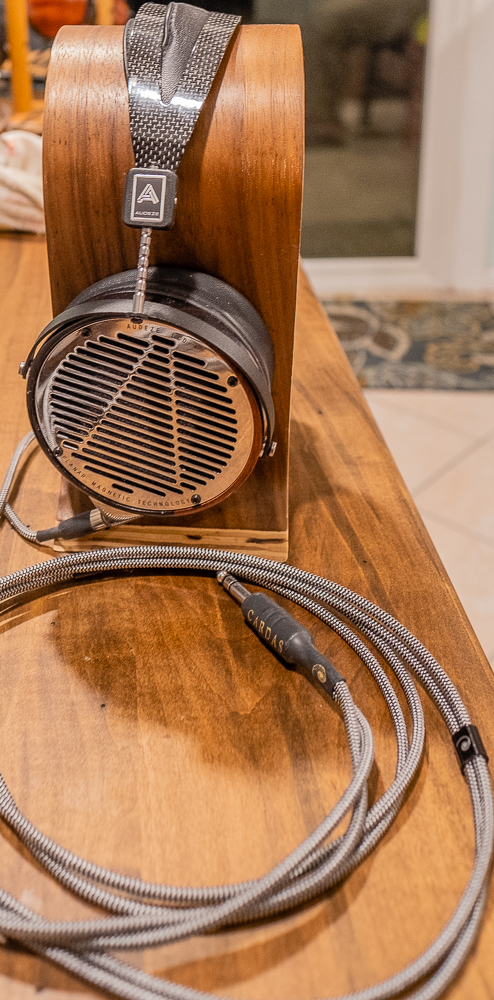
The LCD 4 while not difficult to drive needs high-quality amplification to get the best performance. The soundstage was well defined and inner detail retrieval was exceptional. I could hear the clarity and pure vocal delivery with transparency and Joy’s vocal was captivating.
The Bartók was able to step up the performance of the LCD4 considerably and made the sound memorable. The tonality of instruments and Joy’s songs had my complete attention and made the song memorable.
The synergy of the Bartók with the LCD 4 was exceptional and musical. The stepped-up performance of the LCD 4 was outstanding and as if I had heard it for the first time. Noticeable was a larger soundstage that was able to retrieve more inner detail. The bass had more slam and definition with a pristine extended treble that was shimmering and musical.
Listening to “Russian Dances” on the Pentatone Label with Kazuki Yamada conducting in the Victoria Hall in Geneva using the Hifiman HE1000se the soundstage was layered and had outstanding transparency. Once again noticeable was the performance of both the music and the performance of the orchestra. The synergy was outstanding and the sound once again had no coloration and transported me to Geneva to hear this magnificent performance.
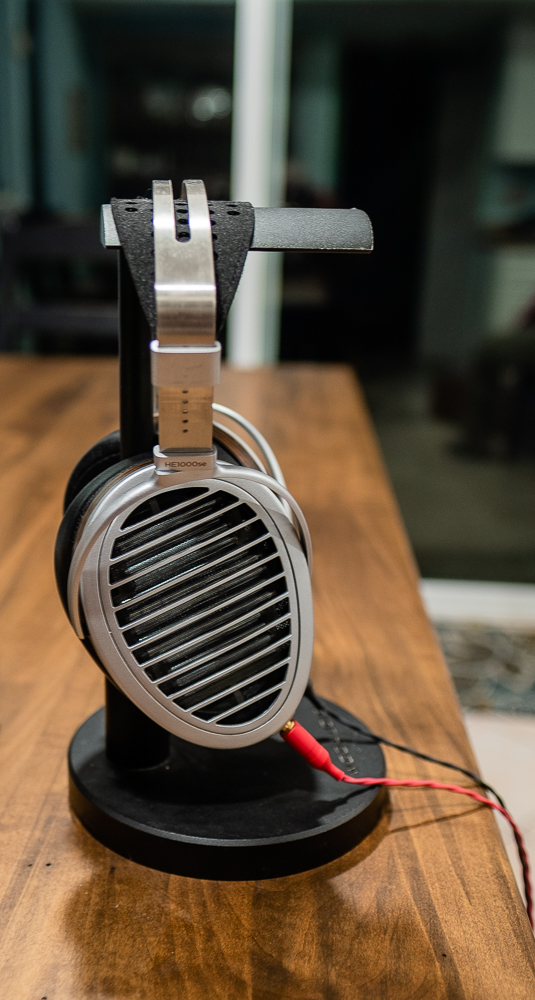
The layered sections of the dynamic passages were amazingly live-sounding and I could appreciate the performance of both the orchestra and Yamada masterfully conducting the orchestra. The Bartók was able to recreate the performance and make it a magical experience. The HE1000se stepped up with creating a wide and deep and fully layered orchestra. The sound was sensational with the 3D presentation I was experiencing during the performance.
Using the Cardas Parsec Cable on the HE1000se made a noticeable difference in clarity over the stock supplied cable. The Bartók was able to let me hear the differences in the two cables easily and making it a great instrument to evaluate equipment in my system.
The dynamics and speed of the amplifier were apparent and the orchestra was amazingly transparent with exceptional clarity. Again I noticed huge differences in the H1000se with better bass definition and speed to handle the most complex passages easily and make the recording believable. The Bartók had no coloration as it was neither warm nor bright and just played music without adding or subtracting anything from the performance.
The imaging was spectacular. Classical music lovers will be astonished by the clarity of the orchestra and the subtle inner detail retrieval. The hall sound is beautifully reproduced with the Bartók. The tonality of the instruments was as good as I have heard and I found myself listening to the entire album during long listening sessions that lasted into the early morning hours. I was able to experience one of the finest performances of Swan Lake as if I was in Geneva at the performance. The Bartók stepped up and showcased the orchestra and created a magical listening experience.
Switching to the Audeze LCD-XC closed headphone using the Cardas Parsec cable with the single-ended output, I listened to Dave Holland’s new collaboration with Zakir Hussain and Chris Potter on the stellar 24 bit/96 kHz recording on Qobuz “Good Hope”. While playing “Zandi” the music was presented in a defined stage with excellent air and the trio in full harmony during the performance.
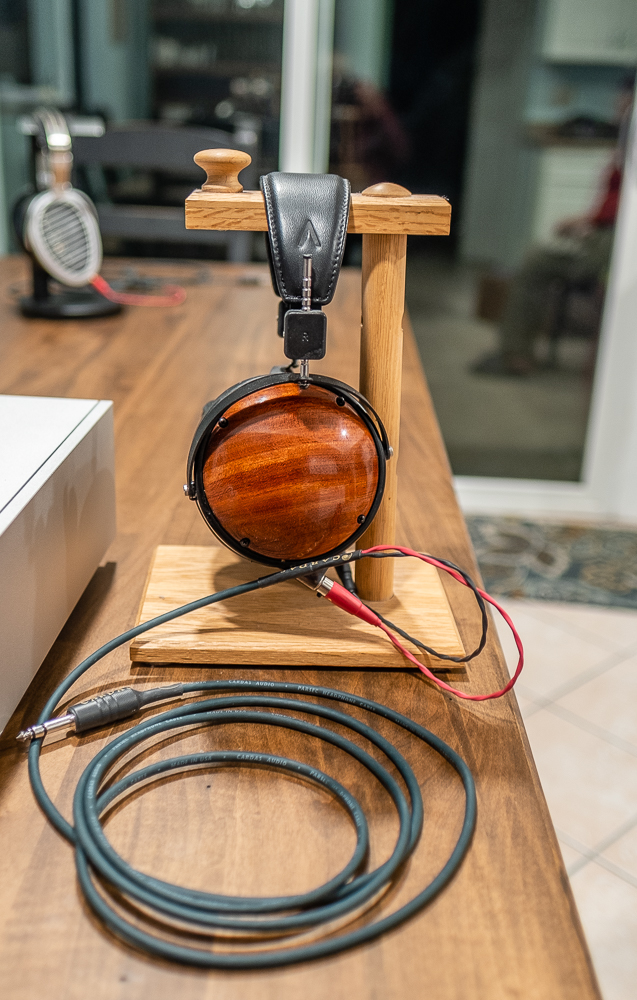
The Audeze XC steps up with upscale gear and the Bartók delivered a sound that I had never experienced using this closed planar headphone previously.
Holland’s bass and Potter’s sax playing on “Good Hope” was magnificent, with a sound that was out of my head and created a 3D soundstage. The XC sounded as if it was playing on another level entirely while creating a wider soundstage that normally is reserved for open headphones.
The bass on Holland’s acoustic bass was tuneful a had excellent extension and texture separated in his own space with pinpoint focus and space away from Potter’s sax. Hussain’s work on percussion was legendary and you could hear the subtle sticks in the percussion but the clarity of the cymbals and high treble extension rewarded me with a soundstage that was wide and deep but it also disappeared and left me with only the music.
Using the balanced output with the notorious Hifiman HE6se headphones was another experience that I will never forget. The HE6se is one of the most difficult headphones in the world to drive and my experience with them dates back to 2009 when I was involved with the prototype focus team Dr. Fang Bian created to help voice this beast.
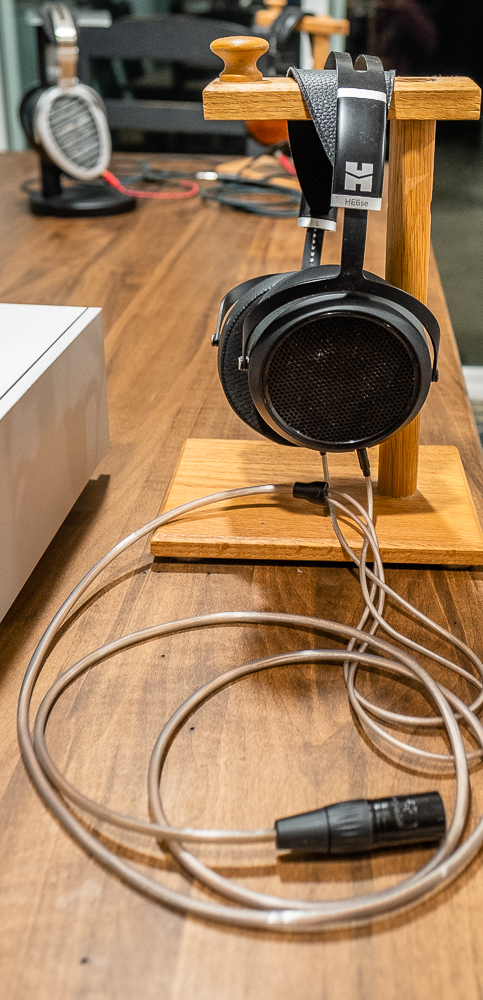
Many headphone amplifiers do not have the power or current to drive the transducer properly. The HE6se demands amplification with high power and current to get the most out of the 82db driver. Most headphone amplifiers fail miserably striving to drive this difficult headphone.
The Bartók using the balanced XLR took a grip on the HE6se as if it was in a vice and never let go of the headphone. The performance was shocking for me as I had never heard the performance of the HE6se sound as good previously.
The bass performance was explosive on large scale recordings with massive extension and speed that only a planar headphone can provide. The upper extension of high notes made bells, cymbals and chimes sound clear and pristine. The speed of the Bartók and HE6 SE made listening to large scale recordings an experience that can only be surpassed by live performances.
Listening to the Hifiman HE6se on the same “Good Hope” album the percussion once again was exceptional. I kept putting on more challenging music and never once did the HE6se disappoint with the Bartók. The amplifier was driving them effortlessly.
During this session, the performance was the best I have heard with the HE6se. The synergy was exceptional and the performances for me were mind-blowing with speed, finesse, and slam. The fast transducer also got the most out of the performance when using Bartók and created a sensational listening experience that I will never forget.
The Audio Technica ATH-ADX5000 is AT’s reference headphone using a unique driver and its 480-ohm impedance makes it challenging to match with amplifiers. Using this on the Auris reference Headonia amplifier I adjust the load to either 300 or 600 OHMs with the impedance switch.
Using the single-ended output on the Bartók, once again I was impressed with the ability of the amplifier without adjustment or the use of any switches to drive the ADX5000 effortlessly. The results were similar to what I was experiencing with the other headphones and the performance again stepped up significantly with better bass and treble extension with a soundstage that was well defined and layered.
Listening to the MQA recording of “Ella and Louis” on Tidal with the ADX5000, the Bartók read the Roon output easily and it was streaming at 24/48 kHz (Note: in order to fully decode MQA from TIDAL the Bartók must be connected to the internet directly via Ethernet, in this set up Roon was performing the initial MQA decoding. The Bartók can Fully decode MQA files stored on a NAS, USB stick or streamed via a content provider (TIDAL), MQA provided by e.g. RoonRender bit-perfect MQA “core” files provided through any input (e.g. if Roon does the unfold, TIDAL desktop client, TIDAL on an iPhone) Roon doesn’t ever apply volume to the audio if attached via a network – it controls the DAC volume). The recording had exceptional transparency and on “Moonlight in Vermont” the clarity of the vocals came alive. The sound was spectacular and the clarity of Ella’s and Louis’ vocal was magnificent. Louis’ unique voice and trumpet were reproduced with articulation and clarity. The listening session felt spiritual and it was if they were here in the room.
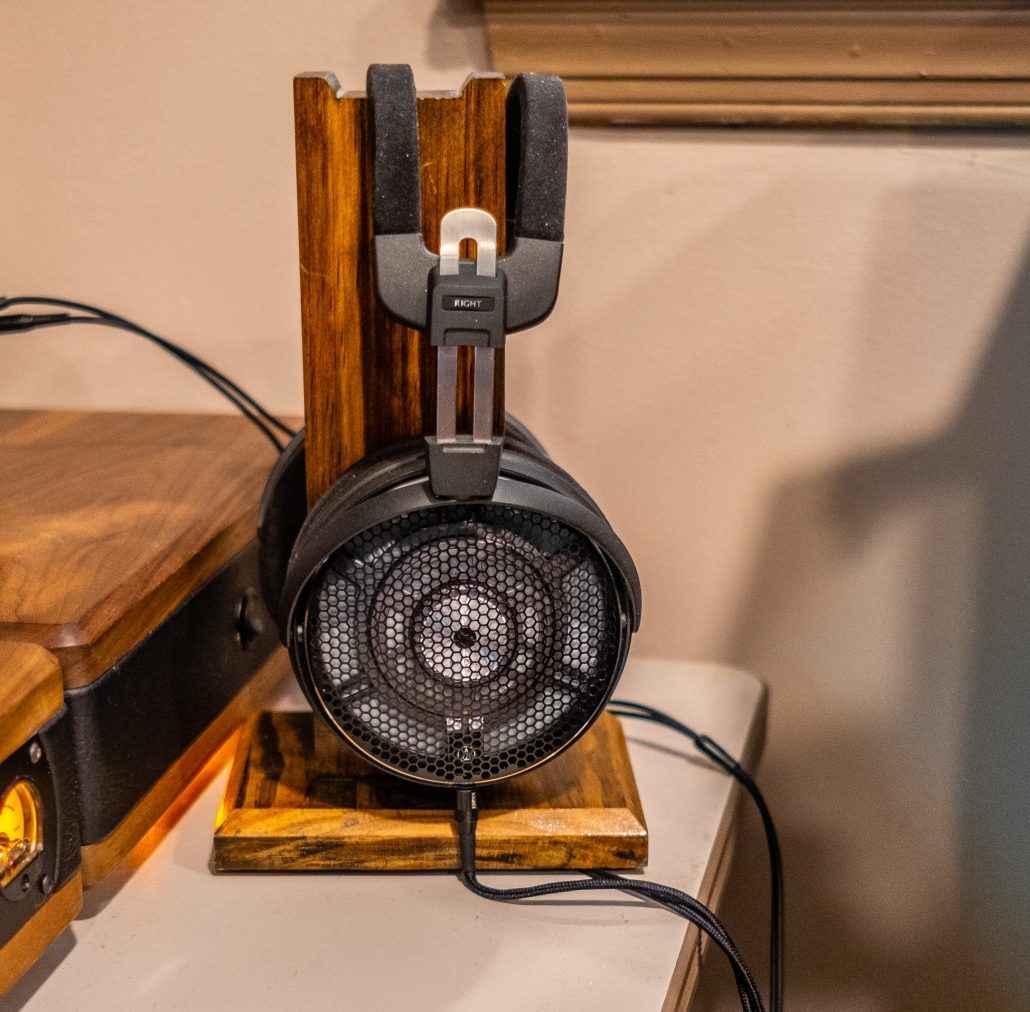
The dynamic presentation of both artists had synergy with the ADX5000 and the Bartók was outstanding in creating that believable you are there feeling that you only experience from top-level performance gear.
Final Thoughts
When Steve Smith arranged an in-home review of the dCS Bartók I became excited and anxious at the same time. I knew the Bartók was special after many listening sessions at shows.
Shows are great to listen to new products but you never really know what the experience is like because of noisy environments, unfamiliar music, and lines of anxious listeners who want to experience the same products.
Once the unit arrived and John Quick had it set up in my system we went to dinner and when John left I started on one of the most musical journeys in the last ten years I have experienced. I could end this now and say this is the best solid-state all in one unit I have ever heard using headphones but I feel you need to hear why I came to that conclusion.
The Bartók in my experience with all reference headphones used and a variety of digital streaming recording sources using Roon, Tidal and Qobuz never failed to impress me with its ability to self adjust with headphones of various loads easily. It also made every headphone used during my evaluation step up in performance significantly. Simply put it made listening to headphones a new experience and it was as if I was using the headphones for the first time in many instances.
The performance of the HiFiman HE6se was the best I have ever experienced in 10 years of using this planar design. The headphone has a special place in my heart because of the design technology and my involvement with the focus group, but folks no fluff here, truly the performance of this transducer paved the way for many companies to benchmark new technology and for the first time with the Bartók I truly experienced what level of performance it can actually reproduce.
dCS has been creating world-class products since 1987. The Ring DAC technology they developed in the early days of digital to this day has not been surpassed.
Digital Streaming and headphone listening is the new norm in personal listening. Sales of headphones are still exploding and new designs continue to improve and get better. The growth of this market is expected to increase over the next 10 years and the Bartók is designed to handle any future upgrade in digital streaming making this product a real end game solution and an investment in your system for life.
The Bartók’s ability to drive amplifiers in a HiFi system eliminates the need for a preamplifier. The Bartók also includes a music streamer that is quiet and offers no compromise in sound quality.
Is it worth $15000? Listeners looking for the last product you will ever need to use in your personal audio listening sessions who want the best performance from their headphones and HiFi systems the answer is YES.
The Bartók is a world-class musical instrument that does not compromise performance. The Bartók is a high-value proposition with a built-in music streamer, Ring DAC technology, and a magnificent groundbreaking headphone amplifier.
The Ring Dac used is a top tier DAC that has never been surpassed in performance and the build is top-notch. The price is justified in that this is the best digital component available that offers no compromises in sound quality.
The neutrally balanced presentation lets you listen to music the way the artist intended it to be heard. The Bartók took all headphones and made them perform at their highest level with a musicality that was simply amazing.
The Bartók for me created over the last few weeks endless hours of a musical adventure and created a new journey for me with my headphones. I felt as if I was hearing them for the first time with more resolution and dynamics and the level of performance was astonishing.
The Bartók stepped-up the performance of all my headphones used in this evaluation with inner detail retrieval and let me hear more information that was masked previously and bought out the best in the tonality of instruments and musicality. The Bartók is the finest musical instrument to enter my listening room for digital streaming. For me the answer is simple, if I was able to write the check now I would purchase this and add it to my system without hesitation.
I am unable to do that at this time due to the investments in our business and I will sorely miss the Bartók when it leaves and have an empty feeling (crying). My time with this magnificent musical instrument has left a lasting memory with me of what is possible in digital music and it is amazing and exciting.
The Bartók will end your ride on the never-ending merry-go-round and allow you to hear the music your way and make it fresh and exciting. The new benchmark for digital performance is here and built for a lifetime of musical enjoyment. Highly Recommended















Want to join discussion?
Feel free to contribute!